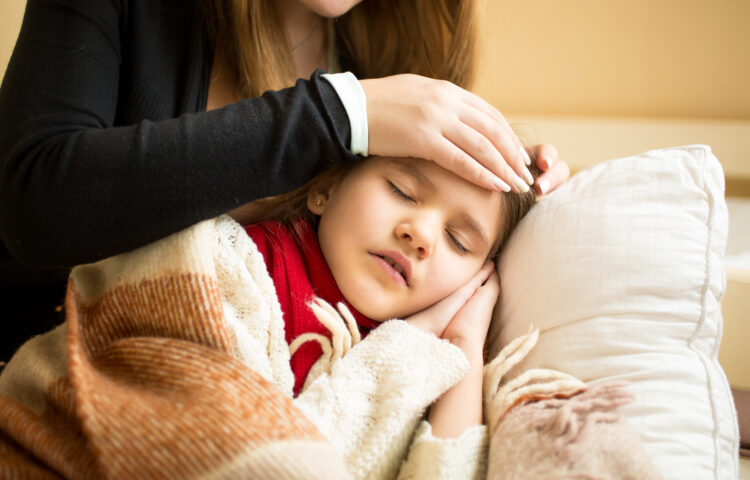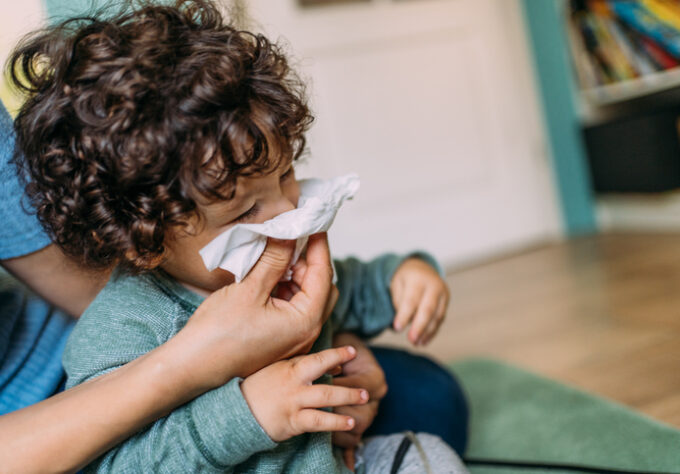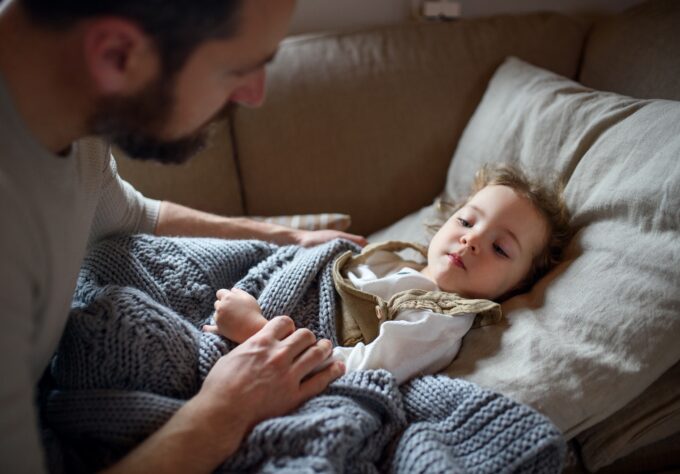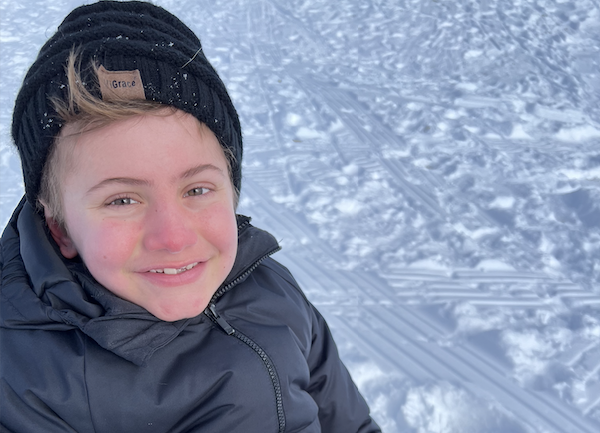As a pediatrician, I know that parents’ panic can set in pretty quickly when it comes to a fever — especially if they have a baby or toddler. Even the calmest of moms and dads can find themselves frantically debating at 1 a.m. whether to give their child medicine and go back to bed, or to call the doctor despite the time.
As strange as it may seem, fevers are a good thing. They’re the body’s way of fighting off infections. Often times, a fever left to do its job will go away on its own within a few days.
However, it’s still completely normal to be worried when your little one’s temperature starts to climb. To help reduce your worry and prepare you for what to do next time the thermometer reading begins to rise, know these top five facts about fevers.
1. A fever in babies under 3 months old should be taken seriously.
When it comes to fevers, 3 months is an important age for infants. Although babies and toddlers may get fevers a few times a year, it is not common for infants under 3 months to have fevers. Fevers in infants this age can be a sign of serious infection and require a full evaluation. If this happens to your infant, remember two things:
Contact your pediatrician or family doctor right away.
If it’s after hours, talk to the nurse on call (if one is available) and/or ask to have your doctor contacted right away. If you can’t get in touch with anyone at your doctor’s office, go to your local emergency department.
Don’t treat the fever.
Don’t give any medication at all before a doctor fully evaluates your baby.
2. A fever once a month in young children (over 3 months old) is normal.
Fevers are a common part of life, and all kids will get one from time-to-time. In fact, one fever a month is a pretty normal frequency to expect in young children, especially if they’re enrolled in child care or have older siblings — which expose kids to germs and infections.
Reason for concern
Although one fever a month can be typical, more than one fever a month may be cause for concern. Contact your pediatrician or family doctor if that’s the case.
And, again, fevers in babies under 3 months old should be taken seriously — and they shouldn’t happen at the same frequency as older children.
3. Medication isn’t always necessary.
Fevers can be scary, and sometimes parents may want to give their children medicine at the first sign of a fever — even when it’s low. But remember that fevers aren’t a bad thing — and they’ll usually go away on their own. So if your child doesn’t seem uncomfortable and is getting plenty of fluids, my advice is to wait to give temperature-lowering medicine (acetaminophen or ibuprofen) and see if the fever naturally resolves.
Alternatives to fever medicine
If your child seems uncomfortable, try some of these tricks to help your kid cool off:
- Apply a cool, wet cloth to your child’s forehead.
- Have your child drink cool fluids.
- Give your child a bath in room-temperature water. Never use a cold bath or rubbing alcohol to try to bring the fever down.
- Avoid bundling your child up in blankets and lots of layers. Kids often report feeling cold when they have a fever, but bundling them up can just trap in that heat — and even make their temperature rise. Instead, dress your child in lightweight clothing and cover with a light sheet or blanket.
If your doctor does instruct you to give your child a pain reliever/fever-reducing medicine…
Give children’s acetaminophen or ibuprofen — making sure to carefully read and follow the package recommendations based on your child’s age and weight. Do not give aspirin (due to its association with Reye syndrome, a rare but potentially fatal disease).
4. How fast the fever rises is often more important than how high the temperature might be.
Many parents are number-focused where fevers are concerned. They worry about how high a temperature is, whether it’s 100 vs. 104 degrees. But the degree of the fever doesn’t tell us much about how sick your child is. A simple cold or infection can result in a high fever, but doesn’t usually indicate a serious problem. Instead of focusing only on how high the fever is, pay close attention to how fast the fever rises.
Why is speed important?
If a temperature rises very rapidly (from a normal temperature to a high one within 30 minutes to an hour) it can cause a febrile seizure. Febrile seizures are convulsions that happen during a fever and usually last for a few minutes.
They aren’t very common, but once children have had a febrile seizure, they’re more likely to have another one in the future. Unfortunately, febrile seizures aren’t preventable — if a fever is going to rise quickly, then there’s no slowing it down.
But, although they are frightening, febrile seizures:
- usually end without treatment
- don’t cause other health problems
- don’t mean a child will have epilepsy or brain damage
5. There is no magic number.
A lot of parents ask me what “the number” is. They’re hoping I can give them an exact number or degree of temperature that indicates when a fever is very serious and they need to call their doctor or go to the emergency room. Although that one number doesn’t exist, these numbers might be helpful to remember:
-
The normal temperature for a healthy child is between 97 and 99.6.
-
Any rectal temperature over 100.4 degrees is considered a fever. When measured orally (in the mouth), 99.6 degrees is considered a fever.
And there are other indications that it may be time to call the doctor about your child’s fever.
Call the doctor if:
- your child has a fever over 104 degrees (a fever of 105 degrees is rare) that persists despite treatment
- you’ve been treating the fever with medication and it’s still not going down
- your child isn’t acting normal, seems uncomfortable, or isn’t drinking
When fever strikes, don’t let panic or worry take control. Fevers may be unpredictable and unpreventable, but knowing the basics about what to do can help keep the panic at bay when a fever does appear.
Learn More
Get detailed information from Nemours’ KidsHealth.org about:
- Fever and Taking Your Child’s Temperature
- First Aid: Fever
- Febrile Seizures
- How to Safely Give Acetaminophen
- How to Safely Give Ibuprofen
This post first appeared in A Child Grows in Philadelphia.



